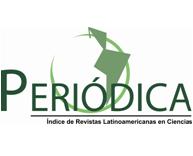BIODEGRADABILITY OF RESIDUES FROM THE SUGAR CANE INDUSTRY IN CUBA
NAEROBIC CO-DIGESTION
Keywords:
Bagasse, co-digestion, press mud, synergy, vinasseAbstract
The application of anaerobic digestion, from waste streams that currently have no use, can be utilized for bioenergy production. The present work objective was to evaluate themixing effect in the biodegradability of residues from the Cuban sugar industry such as bagasse, press mud and vinasse using a mixture design. Methane yield and kinetic process were also evaluated using two different kinetic models: first order model and Gompertz model. The results showed that press mud had the higher methane yield (252 mLCH4/gVS) mean while bagasse had the lowest value (170 mLCH4/gVS). All substrates mix resulted an increase in methane yield up to 23% compared to the expected yield calculated as individual fractions potential methane. This behavior demonstrate a significant synergistic effect. The kinetic results showed that vinasse had the best results




















